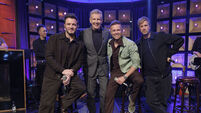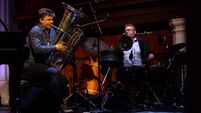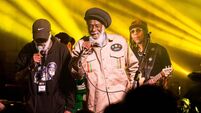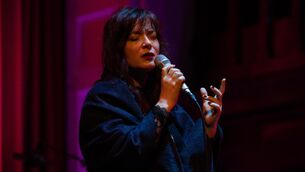Seán Scully: 'If you don’t compromise, you will end up with war'
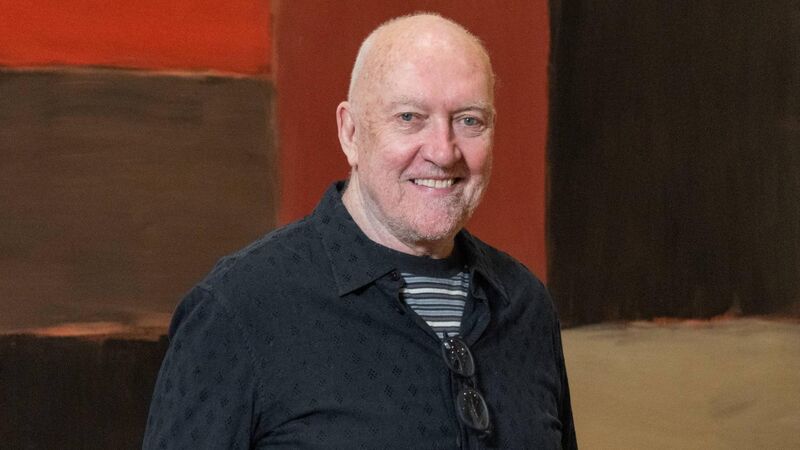
Seán Scully currently has a major exhibition in Philadelphia, and will open a new exhibition in Dublin later in May. (Picture by Joseph Hu. Courtesy of the Philadelphia Museum of Art)
Seán Scully is nothing if not industrious. The Irish abstract painter, best-known for his epic compositions of blocks and stripes of colour, regularly mounts up to a dozen international exhibitions a year. Last month alone, his solo exhibition Song of Colours opened in Neuss, Germany, while The Shape of Ideas, a massive 50-year retrospective, began a four-month run at the Philadelphia Museum of Art in Pennsylvania. A second retrospective, Passenger, will tour Poland, Italy and Croatia for much of the year, while an exhibition called Square opens at the Kerlin Gallery in Dublin on May 17.
Scully will be 77 in June, and the workload has taken its toll, specifically on his back, which has required a number of surgeries. He is speaking to me via Zoom on his mobile phone while reclining on the new sofa in his studio in Tappan, New York.
“I was doing emails and stuff while sitting at a desk, and it was having a terrible effect,” he says. “So now I do it on this sofa, and it doesn’t set my back off at all. Sitting down is what causes all the problems. When I lie down on this, my back lengthens and it takes all the pressure off. There’s no further surgery involved, it’s just maintenance. Isn’t that groovy?”
His Zen-like serenity is short-lived, however. An enquiry about the work in his studio soon has him springing to his feet. Along one wall, there are photographs of Hampstead Heath in London, the city he grew up in before decamping for America in his early twenties. “I took those a couple of years ago, when there was a drought, and the whole place turned yellow.”
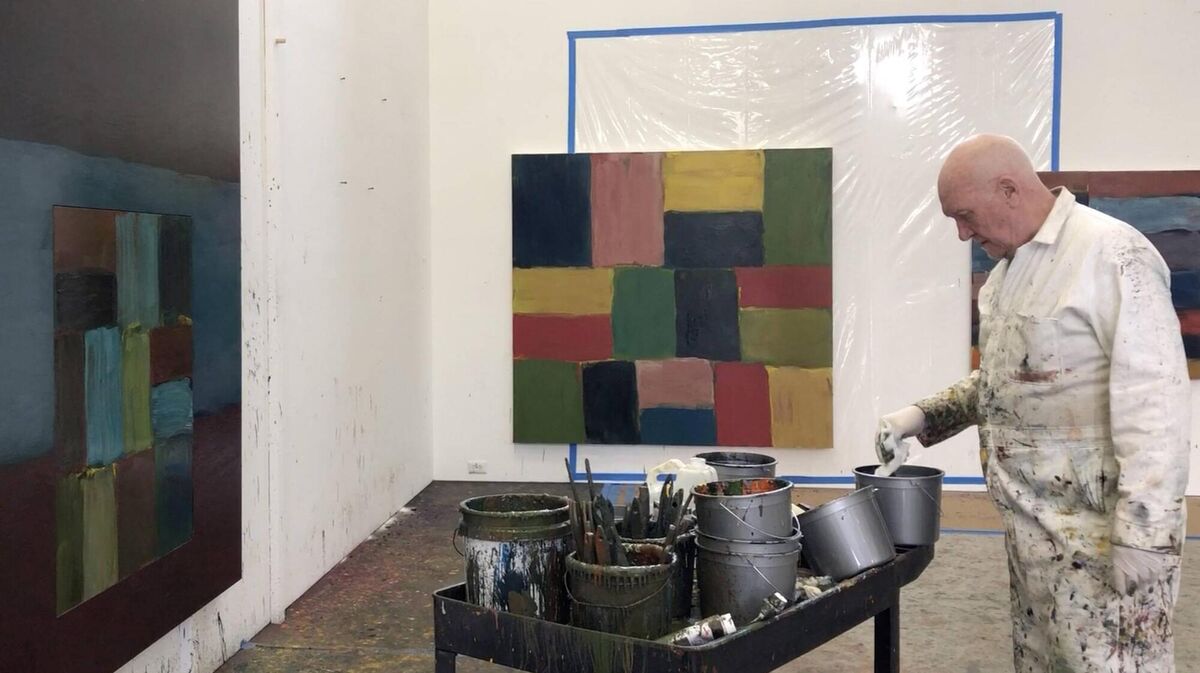
Almost inevitably, he has captured the scene in bands of colour that mirror the stripes in his paintings. “Hampstead Heath might never look like that again,” he says.
A series of new drawings adorning an adjoining wall are also comprised of blocks of colour. “I did those on my iPhone,” he explains. “You print them out, and they look absolutely amazing.”
He has arranged to donate a group of 50 such drawings to the Hugh Lane Gallery in Dublin, the same institution to which he has already gifted a significant group of paintings. Scully prides himself on his Irishness; Dublin is where he was born, and where his family lived until he was four, when poverty drove them to London.
Scully is wealthy now. He and his wife, the Swiss-born artist Liliane Tomasko, own a number of properties in New York, and others in Barcelona, Munich and the south of France. But the Tappan studio, a former broadcasting station, is where he most often works at present. Tappan is a small town with strong links to the American Revolution. George Washington was headquartered here on a number of occasions, and the local museum is named in his honour. It was also where John André, the head of the British Secret Service in America, was tried and executed in 1780.
“I’ve been up to the place where he was hanged,” says Scully. “It was very sad, very melancholic. Everybody adored John André, and they were crying when he was killed. I shed a tear for him too. There’s a tiny British flag there now…” He chuckles sadly. “About two inches high.”
As well as his paintings and photographs, Scully has recently been making sculptures, stone structures that echo his paintings, some of which he has placed in the grounds around his studio. He decides to take the interview outside. His dog Charlie would like to get out too. “But he can’t. He’s a hound dog, and he’d wander off.” He turns and addresses the beast directly. “Piss off, Charlie!”
The grounds comprise five acres of landscaped gardens, fenced all around with wire. Just inside the gate, there’s a large wooden crate, a delivery that has not previously come to Scully’s attention. He reads the label. “’Mobile Art Tours.’ What the fuck is that? Okay then, maybe it’s a sculpture.”
The property cost him $1.3 million, he says. “But the studio alone cost $2.6 million to build.” He swings his camera around. “See that field? All that was tarmac. No one would buy this property for a very simple reason. Because it flooded. They’re so stupid around here, they couldn’t put it together that all this tarmac left the water with nowhere to go except into the building. And I just brought the meadow back, I reclaimed it. And now we have no more floods.”
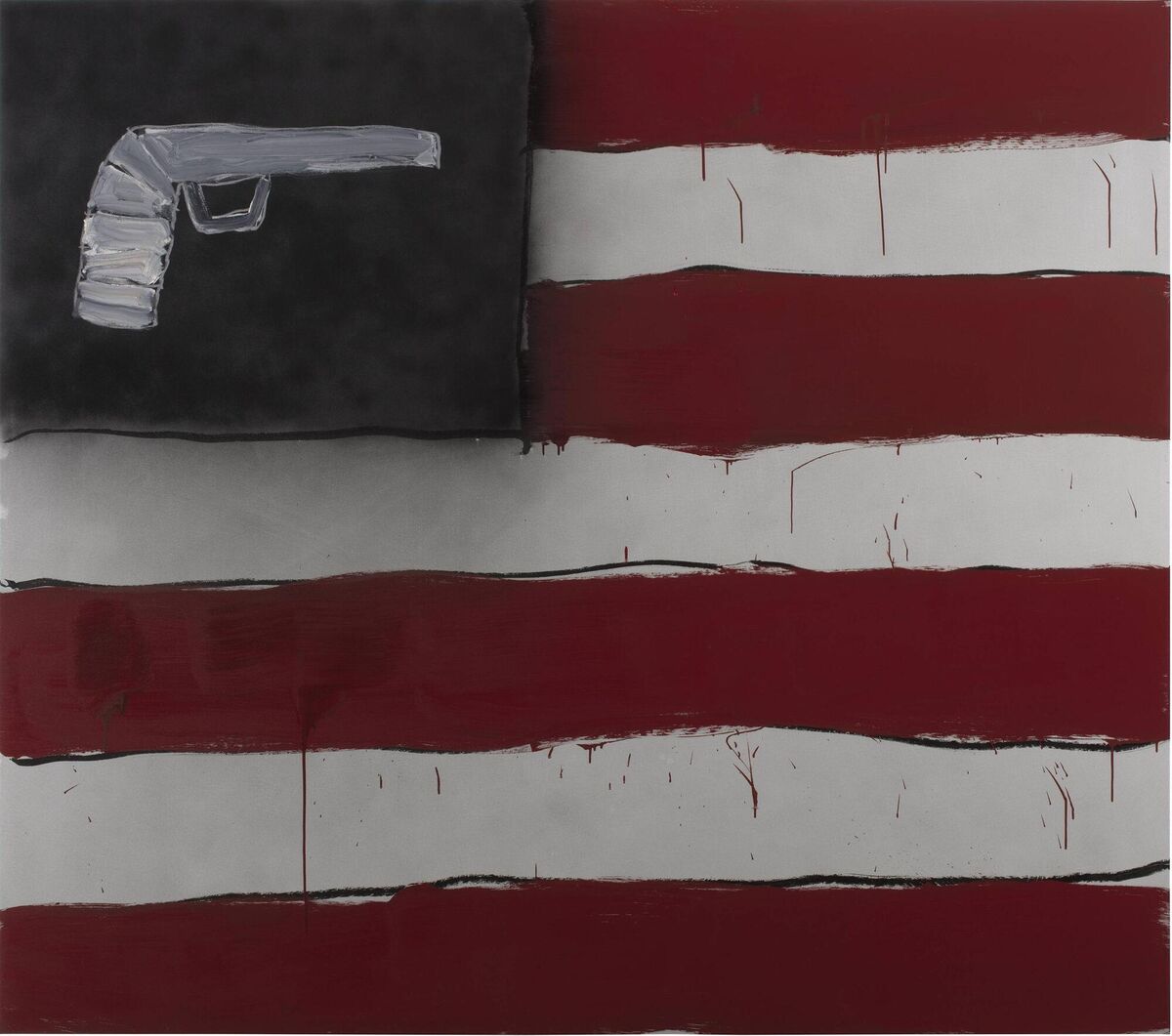
The only water evident now is the ornamental pond, spanned by a wooden Japanese bridge, where dwells the colony of frogs he reckons are just about to emerge from their winter hibernation. Beyond that is the 19th century marble statue of an angel with one broken wing he bought on Ebay, while all around are the trees he’s been busy planting these past few years; Japanese cedar and cypress, mostly, along with rhododendron, a plant viewed as an invasive species here, but one he appreciates for the brightness of its blooms.
“I’m quite the ruralist these times,” he says. “You could say I’m a gentleman farmer. It’s a paradise here now, a bit like Walden’s Pond.” There’s a rustle of leaves overhead. “That’s a finch, do you see it? Now, when you’ve got finches, that means you’ve got a very refined natural situation. Hummingbirds stop in as well. And then, if we cut down trees, we leave them to rot, for the insects.”
The only threat to this idyll are the wild deer that like to feed on Scully’s saplings. “Every time we put something nice in, the deer decide it’s for them,” he says. “I’m a vegan. I don’t want to eat animals. This farming business, what we’re doing to the Earth, it’s a disaster, and I don’t want to cause any more cruelty or grief. The deer are vegan too, of course, but we’re not exactly on the same team, are we? I’m one of the few left in America without a gun, and they know it, don’t they?”
Talk of guns causes Scully’s face to darken. His first son, Paul, died in a car accident, aged eighteen, in 1983. The experience precipitated years of depression, he says, and made him all the more protective of Óisín, his son with Tomasko.
“Óisín is twelve now, and next year, when he finishes at his current school, we’re all moving to France. I was very, very interested in moving back to Ireland, but the school situation in France is easier going, so we’re moving there instead.”
He wonders what might have happened if France, rather than England, had colonised Ireland. “How would the French have behaved? No better, probably. We’d have better wine, but maybe not the history of literature. The English are visually illiterate, so we would have had more painters. The only artists the English appreciate are conceptual artists or portrait painters. Put up a portrait and they go all silly. But show them an abstract painting and they think it’s a bed rug, generally speaking.”
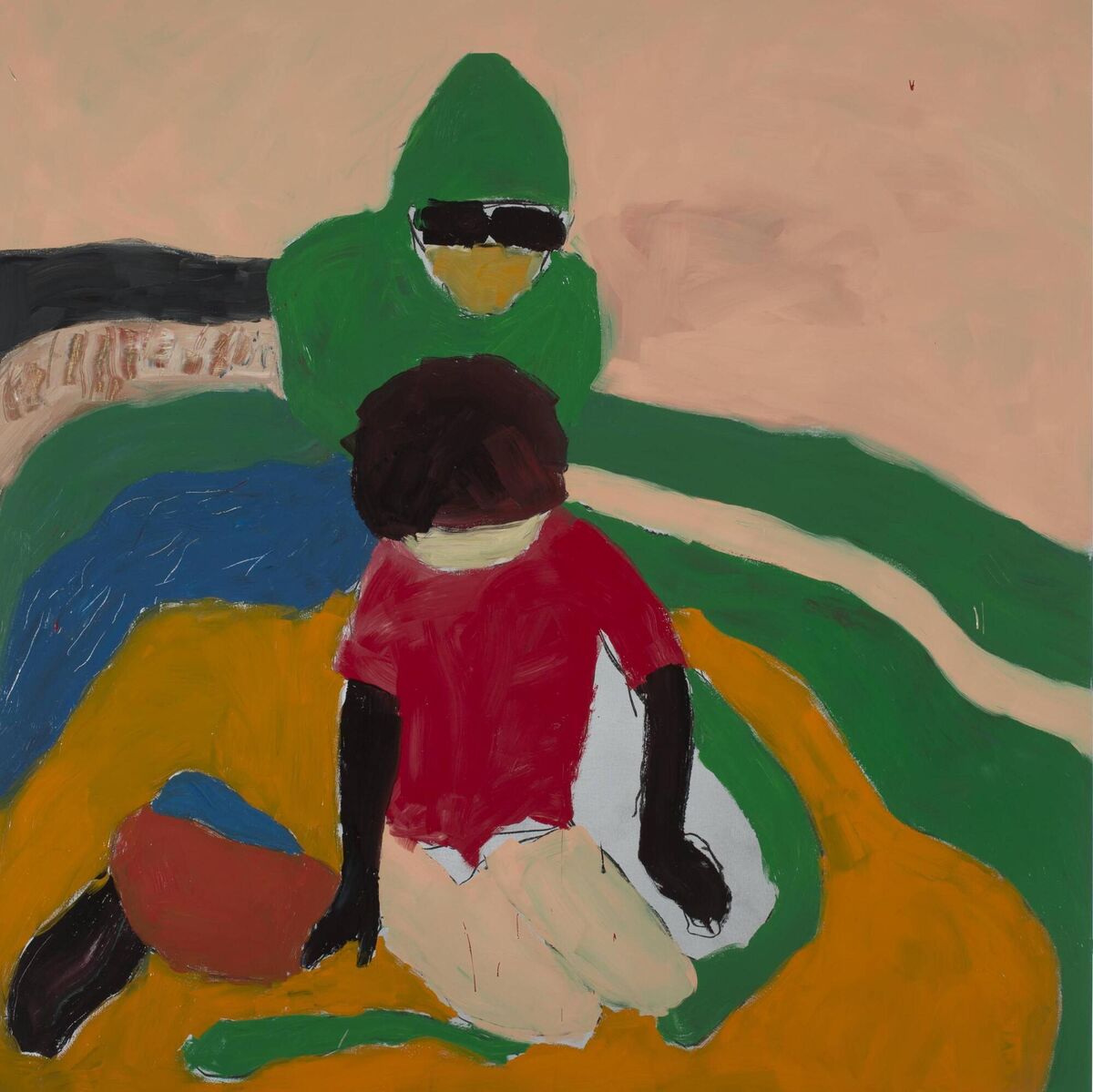
For much of his career, Scully was exclusively an abstract painter. But more recently, he has dallied with figuration, producing a series of paintings of Tomasko and Óisín on the beach in the Caribbean he exhibited under the collective title Eleuthera at the Royal Hibernian Academy in Dublin in 2021.
Before that, there was a series of paintings called Ghost, arguably the most controversial works of his career, in which he replaced the stars on the American flag with a pistol. In America, a country that has what Scully calls a “fetishistic” relationship with its flag, and a love of guns encapsulated in “the right to bear arms” enshrined in the 2nd Amendment to its Constitution, this could almost be seen as an act of treason.
The series was inspired by the shooting dead of a twelve-year-old African-American boy, Tamir Rice, by a policeman in Cleveland, Ohio, in 2014. The incident shocked Scully to the core. “I don’t feel good about bringing up a child in this country any more. You know, the guns thing is just too much.”
He hasn’t exhibited the Ghost series yet, “but I’m showing them in Moscow in December.” The Russian invasion of Ukraine will not jeopardise the exhibition, he insists. “Is it going ahead? Sure. You know the Russians love to criticise America, and America loves to criticise the Russians. And you know what that brings. But you need compromise. If you don’t compromise, you will end up with war. History teaches us that. And that’s what’s happened. America’s provoking all this shit, and nobody’s prepared to bend.”
There are no flags, American or otherwise, on Scully’s property. His tour concludes back where it started, by the gate, where he is met by an assistant. They converse briefly in Spanish. “I’ve just asked him what’s in the box,” he explains. “And guess what? It’s a Buddha.” His eyes twinkle with amusement. “A Buddha I bought so long ago, I’d forgotten all about it.”
- Seán Scully: The Shape of Ideas runs at Philadelphia Museum of Art until July 31 philamuseum.org/calendar/exhibition/sean-scully-shape-ideas Seán Scully
- Square runs at the Kerlin Gallery, Dublin from 17th May – 25th June kerlingallery.com/artists/sean-scully
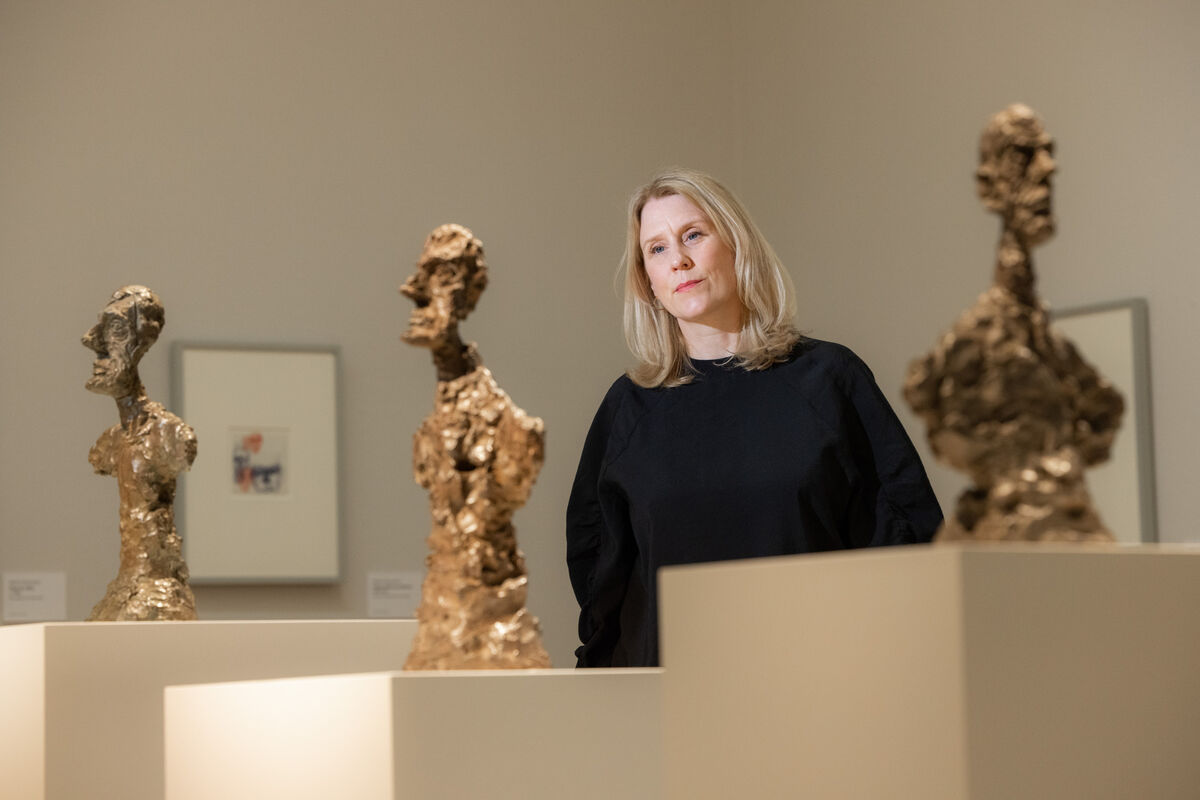
Alberto Giacometti (1901 – 1966) was one of the most important sculptors of the 20th century. This first exhibition of his work at the NGI includes more than 50 bronze and plaster sculptures, paintings, drawings and prints, dating from his early years in his native Switzerland through to the late work he made in his Paris studio. Models included his brother Diego, his wife Annette Arm and the writer Simone de Beauvoir.
Born in Serbia in 1946, and now based in New York, Marina Abramovic has been a fearless pioneer of performance art for more than fifty years. Presented as part of Kaunas: European Capital of Culture 2022, Memory of Being features what is billed as “a spectacular installation” of her documentation and films from the 1960s to the present day.
Born in Portugal in 1935, and long resident in Britain, Paula Rego is one of the most important artists working today. This exhibition features over 80 paintings, collages, pastels, drawings and etchings, many of them inspired by fairytales, psychology and sexual politics. Included are her Dog Woman and Abortion series, as well as a series of pastels exploring her experience of depression.
Surrealism is usually associated with a particular clique of artists in Paris in the years after World War I. This huge review makes the point that it was actually an international movement. On that basis, it includes not just the usual suspects – Salvador Dali, Marcel Duchamp, René Magritte et al - but also Kikuji Yamashita from Japan, Kaveh Golestan from Iran and Tarsila do Amaral, among scores of others.
Ai Weiwei is arguably the most controversial artist of our time. In his native China, he provoked the authorities with works such as a series of photographs that showed him raising his middle finger to buildings that functioned as centres of power. After enduring a period of imprisonment in 2011, he now lives in Portugal, and continues to be a fiercely vocal social activist. This is his largest retrospective to date.

